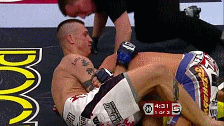
#Anaconda choke how to#
The following video by Mario Delgado shows how to set up the darce choke after a knee slice pass.Ī problem with the darce choke, or at least due to the person attacking it, is that it can often become a neck crank instead of a choke. The darce choke can be set up from many places but is most commonly attacked from half guard or side control when the defender tries to get an under hook. The darce choke allows for the ability to apply a huge amount of pressure against the defender’s neck using their own shoulder. The second arm will go over the defender’s back for support. The fundamental difference the darce entails is that the wrapping (choking) arm goes under the armpit first and then wraps over the neck. Chokes That WIN Tournaments! Click Learn More below!Īt first glance, the guillotine looks a lot like an arm-in guillotine, but if you tried setting it up the same way you set up an arm-in guillotine, it probably won’t work. It is best practice, however, to become skilled at all three. What I’ve come around to learn is that grapplers will align themselves with either the guillotine, darce, or anaconda. I will admit that I am not a huge fan of the choke even though I know it is effective for some people. The next submission I want to get into is the darce choke.

This small tip improved my arm-in guillotine finishing rate tremendously. One tip I learned from Garry Tonon and Gordon Ryan at a seminar is that the best way to grip the arm-in guillotine is that the neck wrapping arm should go as deep as it would if you were attacking a high-elbow guillotine. In the next video, Neil Melanson shows a good way of finishing this submission. Also, if I have gotten the arm-in guillotine in the guard, it is easy to butterfly sweep them over and transition to mount. For example, if someone shoots a double leg takedown against me and I get a head and arm trapped, it is easy to snap them down and take their back. What the arm-in guillotine provides as opposed to the regular guillotine is a lot of control over the defender. I will admit that this guillotine is much more difficult to finish than the regular guillotine and many grapplers don’t figure it out for years. The arm-in guillotine is very similar to the standard guillotine, so often in fact, that new students will not realize the difference, which is that an arm is now trapped with the head. The following video by Mike Palladino shows a good example of this technique. This guillotine is very similar to the classic guillotine except the wrapping arm shoots deeper and the support arm extends over the back of the defender. The following video by Lachlan Giles shows how to set up a modified version of the guillotine using a 10-finger grip.Īnother guillotine I like a lot due to its great effectiveness is the high-elbow guillotine. There are numerous ways for the arms to grip but the standard is simply wrapping over the front of the wrist. The attacker’s second arm will come in and grab their other wrist as a support arm. The first involves the attacker wrapping the defenders head with one arm till that arm gets under the chin. The guillotine is split into two main styles, the arm-in guillotine and the regular guillotine. In fact, this choke is taught in the US Army combatives manual. The guillotine, aka the front naked choke, is a technique taught at white belt and is a necessary skill for self-defense. The first submission I want to discuss, which can be considered the parent submission of these chokes is the guillotine. Finally, these chokes are all considered “front” chokes instead of rear, like the rear naked choke. These chokes work by limiting to blood flow to the brain by constricting the cerebral arteries. The standard guillotine, though, as opposed to the arm-in guillotine, only requires wrapping the head and not the arm. These chokes all require the attacker to use both their arms to wrap the defenders head and arm. This is a question I get asked often so I thought it would be a good idea to articulate it for the entire community.īefore jumping into each submission, I want to discuss the characteristics these choke all share in common. In this article, I want to distinguish between guillotine, darce, and anaconda chokes as best as I can with examples.

Sometimes this question can be easy to answer but it can also be difficult, even for great instructors. An Effective No-Gi Choke System With Lachlan Giles! Click Learn More below! A common style of questions students ask is what the difference is between one submission and another. One reason Jiu Jitsu can be muddy at times is because it is difficult to understand submissions just by looking at them. Know The Ins and Outs Of These 3 Powerful Chokes!Īs beautiful as Jiu Jitsu can be, it can also be confusing, especially for newer students.


 0 kommentar(er)
0 kommentar(er)
